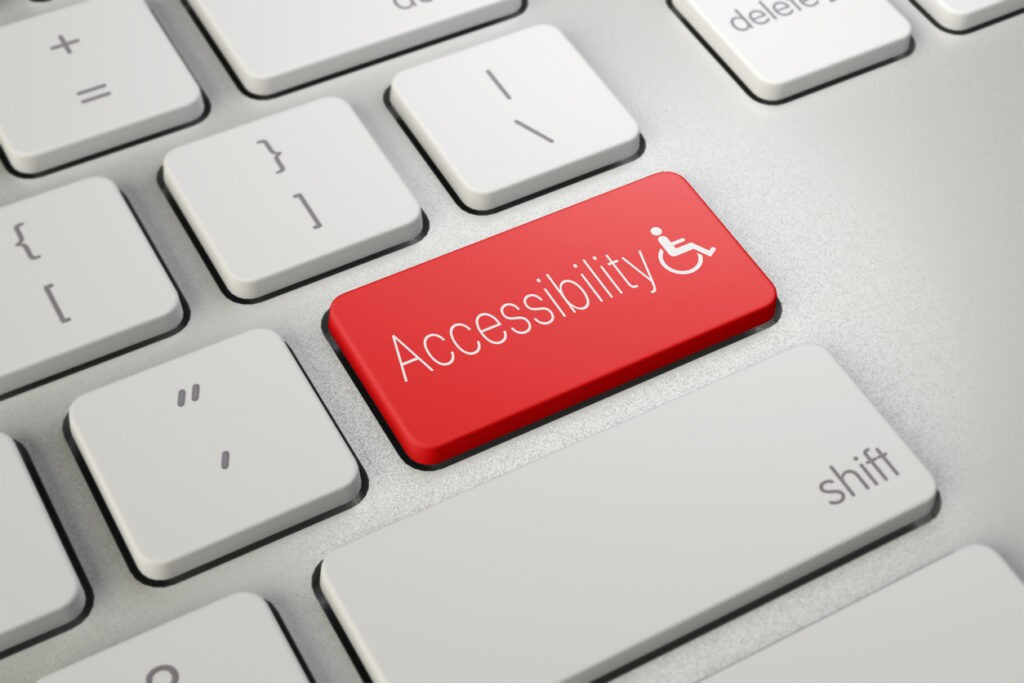
In the fast-evolving landscape of digital experiences, the concept of web accessibility has emerged as a cornerstone in creating online spaces that are inclusive and accommodating to users of all abilities. As technology becomes an integral part of our daily lives, it is imperative to design websites with inclusivity in mind, ensuring that everyone, regardless of their physical or cognitive abilities, can access and navigate the digital realm seamlessly.
Understanding Web Accessibility: A Necessity, Not an Option
Breaking Down Barriers:
Web accessibility involves the practice of removing barriers that may prevent individuals with disabilities from interacting with or accessing websites. These barriers can include issues related to visual, auditory, motor, or cognitive impairments, and web designers play a crucial role in dismantling them.
The Inclusivity Imperative:
Designing for inclusivity goes beyond compliance; it’s about fostering an environment where everyone feels welcome and valued. By prioritizing accessibility, web designers contribute to a more equitable digital landscape.
The Significance of Inclusive Design Practices
Broadening Audience Reach:
One of the primary benefits of incorporating inclusive design practices is the expansion of the audience reach. An accessible website ensures that individuals with disabilities can engage with content, products, and services, thereby tapping into a demographic that may have been previously underserved.
Enhancing User Experience for All:
Inclusive design not only benefits individuals with disabilities but enhances the overall user experience for everyone. Implementing features such as clear navigation, readable fonts, and adaptable layouts creates a more user-friendly interface for all users.
Practical Tips for Web Accessibility
Semantic HTML:
Utilizing semantic HTML not only enhances search engine optimization but also provides a clear structure for screen readers. Properly structured HTML improves navigation for users with visual or cognitive impairments.
Alt Text for Images:
Including descriptive alt text for images is a fundamental practice for web accessibility. This ensures that individuals with visual impairments can understand the content conveyed by images through screen readers.
Captioning and Transcripts:
For multimedia content, providing captions and transcripts is essential. This accommodates users with hearing impairments and ensures that the content is accessible and understandable across various contexts.
Keyboard Accessibility:
Designing websites that are navigable using a keyboard is crucial for individuals with motor disabilities who may rely on alternative input methods. Ensure that all interactive elements can be accessed and activated using only a keyboard.
Color Contrast:
Maintaining sufficient color contrast in text and background elements is vital for users with visual impairments or color blindness. High contrast ensures readability and usability across diverse user scenarios.
Responsive Design:
Implementing responsive design principles ensures that websites adapt seamlessly to different screen sizes and devices. This is particularly beneficial for users with varying abilities who may access the web through a range of devices.
Testing with Assistive Technologies:
Regularly testing websites with assistive technologies such as screen readers and voice recognition software is a proactive approach to ensuring ongoing accessibility. This allows designers to identify and address potential issues promptly.
Forging a More Inclusive Digital Future
In the quest for a more inclusive digital future, web accessibility stands as a foundational principle that every web designer should embrace. Designing with inclusivity in mind not only aligns with ethical considerations but also makes good business sense by broadening the audience reach and enhancing the user experience for all.
As technology continues to evolve, so too should our commitment to creating digital spaces that prioritize accessibility. By incorporating practical tips and fostering a mindset of inclusivity, web designers can play a pivotal role in shaping a digital landscape that truly serves everyone, regardless of their abilities or disabilities. In the journey toward a more inclusive online world, every line of code, every design decision, and every user interface element can contribute to breaking down barriers and fostering a digital realm that is welcoming to all.




